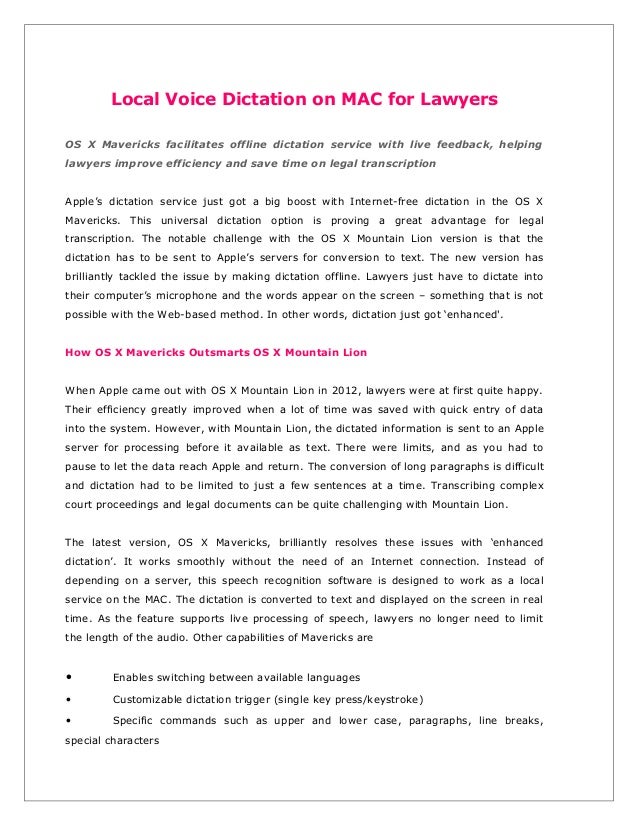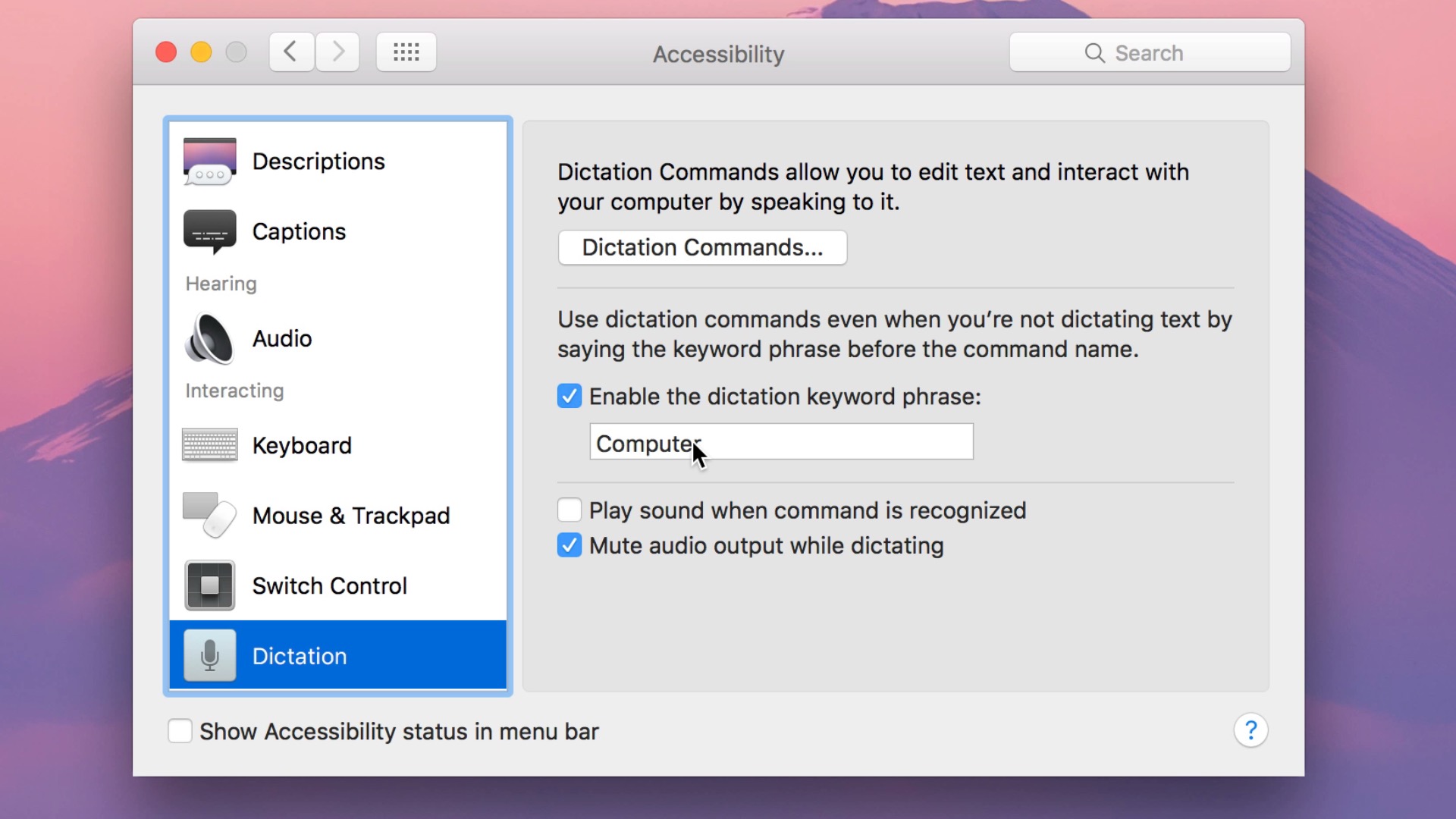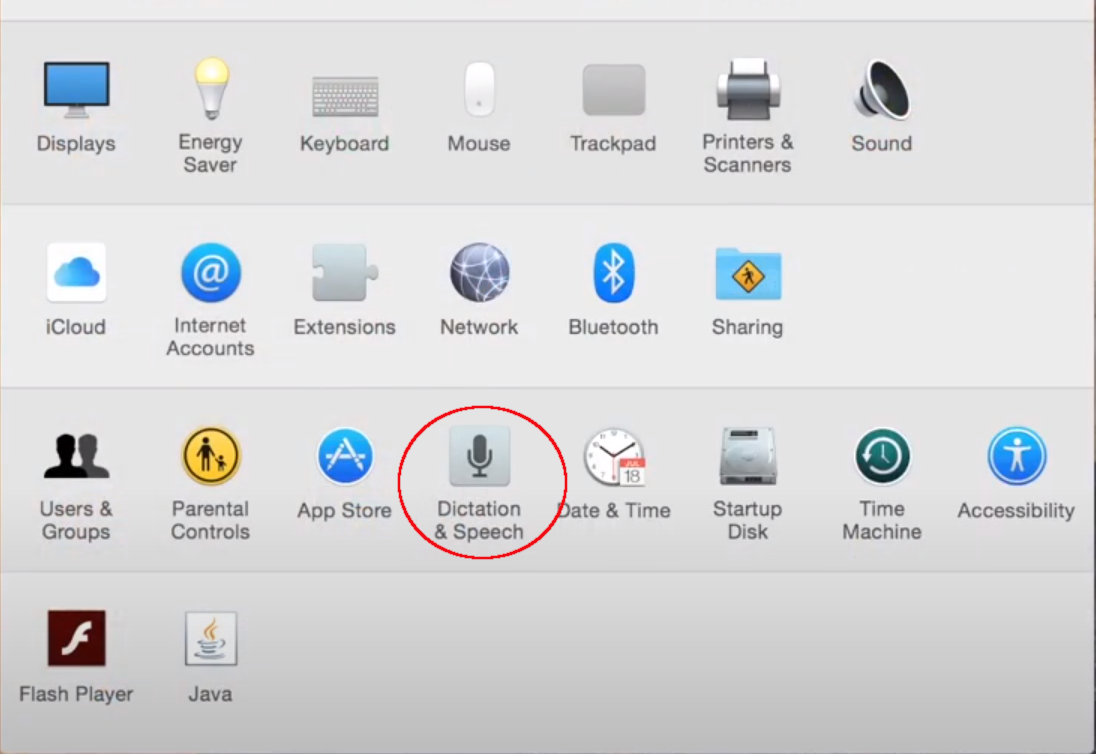macOS Catalina introduces Voice Control, a new way to fully control your Mac entirely with your voice. Voice Control uses the Siri speech-recognition engine to improve on the Enhanced Dictation feature available in earlier versions of macOS.1
Price: Speech recognition and video speech recognition is free for 0-60 minutes. From 60 minutes to 1 million minutes, speech recognition can be used at a rate of $0.006 per 15 seconds. Similarly, video recognition can be used at the rate of $0.012 per 15 seconds. These prices are for the API to be used on the personal systems.

Advanced SystemCare Free. IObit Uninstaller. Tazti Speech Recognition Software for Windows 7, 8, 8.1 (64-bit). This voice recognition software allows you to record the streaming audio or mic input from external applications or tools. The files that are fetched hereafter are saved on the hard disk of the computer and you are also free to schedule as many numbers of future recordings as you want with the aid of the useful add-ons. Download and install the best free apps for Voice Recognition Software on Mac from CNET Download.com, your trusted source for the top software picks.
- Apple dictation is ideal for infrequent use or for those who want a free but reliable dictation solution. We've also featured the best speech-to-text software. Round up of today's best deals.
- Windows Speech Recognition (plus Cortana) Windows Speech Recognition is a free and built-in application in windows system. It’s easy to set up it. You just need to type “speech recognition” in the search bar, select “start speech recognition” and follow the procedure. After successful setup, the voice box appears.
- Start a New Email and in the ribbon, select the Office Dictation button while signed into Microsoft 365 on a mic-enabled device. For Mac: the default keyboard shortcut for dictate is: ⌥ (Option) + F1. Wait for the button to turn on and start listening. Move your cursor to the Subject line start dictating.
- You can receive 98-100 percent accuracy with the combined efforts of real human transcribers and speech recognition technology of this voice transcription software designed for Mac users. You can get the voiceover document in a wide range of formats like PDF, DOCX, HTML and several others which will be saved on the hard disk of the device.
How to turn on Voice Control
After upgrading to macOS Catalina, follow these steps to turn on Voice Control:

- Choose Apple menu > System Preferences, then click Accessibility.
- Click Voice Control in the sidebar.
- Select Enable Voice Control. When you turn on Voice Control for the first time, your Mac completes a one-time download from Apple.2
Voice Control preferences
When Voice Control is enabled, you see an onscreen microphone representing the mic selected in Voice Control preferences.
Apple Dictation Commands
To pause Voice Control and stop it from from listening, say 'Go to sleep' or click Sleep. To resume Voice Control, say or click 'Wake up'.

Voice Recognition Mac
How to use Voice Control
Get to know Voice Control by reviewing the list of voice commands available to you: say 'Show commands' or 'Show me what I can say'. The list varies based on context, and you may discover variations not listed. To make it easier to know whether Voice Control heard your phrase as a command, you can select 'Play sound when command is recognised' in Voice Control preferences.
Basic navigation
Voice Control recognises the names of many apps, labels, controls and other onscreen items, so you can navigate by combining those names with certain commands. Here are some examples:

- Open Pages: 'Open Pages'. Then create a new document: 'Click New Document'. Then choose one of the letter templates: 'Click Letter. Click Classic Letter'. Then save your document: 'Save document'.
- Start a new message in Mail: 'Click New Message'. Then address it: 'John Appleseed'.
- Turn on Dark Mode: 'Open System Preferences. Click General. Click Dark'. Then quit System Preferences: 'Quit System Preferences' or 'Close window'.
- Restart your Mac: 'Click Apple menu. Click Restart' (or use the number overlay and say 'Click 8').
You can also create your own voice commands.
Number overlays
Use number overlays to quickly interact with parts of the screen that Voice Control recognises as clickable, such as menus, checkboxes and buttons. To turn on number overlays, say 'Show numbers'. Then just say a number to click it.
Number overlays make it easy to interact with complex interfaces, such as web pages. For example, in your web browser you could say 'Search for Apple stores near me'. Then use the number overlay to choose one of the results: 'Show numbers. Click 64'. (If the name of the link is unique, you might also be able to click it without overlays by saying 'Click' and the name of the link.)
Voice Control automatically shows numbers in menus and wherever you need to distinguish between items that have the same name.
Grid overlays
Use grid overlays to interact with parts of the screen that don't have a control, or that Voice Control doesn't recognise as clickable.
Say 'Show grid' to show a numbered grid on your screen, or 'Show window grid' to limit the grid to the active window. Say a grid number to subdivide that area of the grid, and repeat as needed to continue refining your selection.
To click the item behind a grid number, say 'Click' and the number. Or say 'Zoom' and the number to zoom in on that area of the grid, then automatically hide the grid. You can also use grid numbers to drag a selected item from one area of the grid to another: 'Drag 3 to 14'.
To hide grid numbers, say 'Hide numbers'. To hide both numbers and grid, say 'Hide grid'.
Voice Recognition Software Mac Reviews
Dictation
When the cursor is in a document, email message, text message or other text field, you can dictate continuously. Dictation converts your spoken words into text.
- To enter a punctuation mark, symbol or emoji, just speak its name, such as 'question mark' or 'per cent sign' or 'happy emoji'. These may vary by language or dialect.
- To move around and select text, you can use commands such as 'Move up two sentences' or 'Move forward one paragraph' or 'Select previous word' or 'Select next paragraph'.
- To format text, try 'Bold that' or 'Capitalise that', for example. Say 'numeral' to format your next phrase as a number.
- To delete text, you can choose from many delete commands. For example, say 'delete that' and Voice Control knows to delete what you just typed. Or say 'Delete all' to delete everything and start over.
Voice Control understands contextual cues, so you can seamlessly transition between text dictation and commands. For example, to dictate and then send a birthday greeting in Messages, you could say 'Happy Birthday. Click Send.' Or to replace a phrase, say 'Replace I’m almost there with I just arrived'.
You can also create your own vocabulary for use with dictation.
Create your own voice commands and vocabulary

Create your own voice commands
- Open Voice Control preferences, such as by saying 'Open Voice Control preferences'.
- Click Commands or say 'Click Commands'. The complete list of all commands opens.
- To add a new command, click the add button (+) or say 'Click add'. Then configure these options to define the command:
- When I say: Enter the word or phrase that you want to be able to speak to perform the action.
- While using: Choose whether your Mac performs the action only when you're using a particular app.
- Perform: Choose the action to perform. You can open a Finder item, open a URL, paste text, paste data from the clipboard, press a keyboard shortcut, select a menu item or run an Automator workflow.
- Use the checkboxes to turn commands on or off. You can also select a command to find out whether other phrases work with that command. For example, 'Undo that' works with several phrases, including 'Undo this' and 'Scratch that'.
To quickly add a new command, you can say 'Make this speakable'. Voice Control will help you configure the new command based on the context. For example, if you speak this command while a menu item is selected, Voice Control helps you make a command for choosing that menu item.
Create your own dictation vocabulary
- Open Voice Control preferences, such as by saying 'Open Voice Control preferences'.
- Click Vocabulary, or say 'Click Vocabulary'.
- Click the add button (+) or say 'Click add'.
- Type a new word or phrase as you want it to be entered when spoken.
Learn more
- For the best performance when using Voice Control with a Mac notebook computer and an external display, keep your notebook lid open or use an external microphone.
- All audio processing for Voice Control happens on your device, so your personal data is always kept private.
- Use Voice Control on your iPhone or iPod touch.
- Learn more about accessibility features in Apple products.
1. Voice Control uses the Siri speech-recognition engine for U.S. English only. Other languages and dialects use the speech-recognition engine previously available with Enhanced Dictation.
Free Voice Recognition Software For Macs
2. If you're on a business or school network that uses a proxy server, Voice Control might not be able to download. Have your network administrator refer to the network ports used by Apple software products.
Comments are closed.